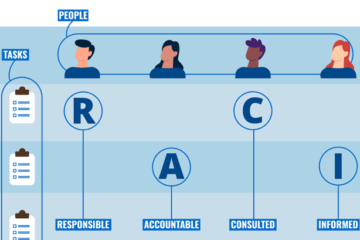Investing is a crucial component of building wealth and securing financial stability for the future. However, every investment comes with a degree of risk. Understanding and managing these risks is essential for investors who aim to achieve their financial goals while minimizing potential losses. This article explores the principles of risk management in investing, focusing on the balance between high-risk and low-risk assets.
Understanding Investment Risks
Investment risk refers to the possibility of losing some or all of the money invested due to various factors. These factors can include market volatility, economic downturns, changes in interest rates, and company-specific issues, among others. Generally, higher potential returns are associated with higher risks, while lower-risk investments tend to offer more modest returns.
- Market Risk: The risk that the value of investments will decrease due to market factors, such as economic changes or political events.
- Credit Risk: The risk that a borrower will default on a loan or bond.
- Liquidity Risk: The risk of not being able to sell an investment quickly without affecting its price.
- Interest Rate Risk: The risk that changes in interest rates will negatively impact the value of investments, particularly bonds.
High-Risk Assets
High-risk assets are investments that have a higher potential for significant returns but come with a greater chance of loss. These assets are suitable for investors with a higher risk tolerance and a longer investment horizon.
- Stocks: Stocks represent ownership in a company and can provide substantial returns through capital appreciation and dividends. However, stock prices can be highly volatile and influenced by market conditions, company performance, and broader economic factors.
- Cryptocurrencies: Digital currencies like Bitcoin and Ethereum have gained popularity due to their potential for high returns. However, they are extremely volatile and can experience significant price swings based on market sentiment, regulatory news, and technological developments.
- Venture Capital and Private Equity: Investing in startups and private companies can yield high returns if the business succeeds. However, these investments are highly speculative and come with a high risk of failure.
Low-Risk Assets
Low-risk assets are investments that offer more stability and lower potential returns. These investments are ideal for conservative investors or those with a shorter investment horizon.
- Bonds: Bonds are debt securities issued by governments or corporations that pay periodic interest and return the principal at maturity. While they are generally considered safer than stocks, bonds are still subject to interest rate risk and credit risk.
- Savings Accounts and Certificates of Deposit (CDs): These are low-risk, low-return investments offered by banks. They provide guaranteed returns in the form of interest but typically offer lower returns compared to other investment options.
- Treasury Securities: U.S. Treasury securities, such as T-bills, T-notes, and T-bonds, are considered among the safest investments since they are backed by the U.S. government. They provide modest returns but are virtually free of default risk.
Balancing High-Risk and Low-Risk Assets
Mutual Funds
Mutual funds offer a way to balance high-risk and low-risk assets within a single investment vehicle. These funds pool money from many investors to purchase a diversified portfolio of stocks, bonds, and other securities. This diversification reduces the risk associated with individual securities, as losses in one investment can be offset by gains in others. Mutual funds are managed by professional fund managers, who make investment decisions based on the fund’s objectives. This makes mutual funds an attractive option for investors seeking exposure to a variety of assets without the need to manage individual investments actively.
Commodity Trading
Commodity trading involves buying and selling raw materials like gold, oil, and agricultural products. Commodities can serve as both high-risk and low-risk investments depending on the specific asset and market conditions. For example, gold is often seen as a safe-haven asset during economic uncertainty, providing stability and acting as a hedge against inflation. On the other hand, trading commodities like oil and agricultural products can be highly volatile due to factors such as geopolitical events, weather conditions, and supply chain disruptions. Including commodities in a diversified portfolio can enhance risk management by providing exposure to assets that often move independently of traditional stocks and bonds.
Best Practices
Achieving a balanced investment portfolio involves diversifying investments across high-risk and low-risk assets. This diversification helps to mitigate risk and smooth out returns over time.
- Asset Allocation: Asset allocation is the process of dividing investments among different asset categories, such as stocks, bonds, and cash. The right mix depends on the investor’s risk tolerance, investment goals, and time horizon. A common rule of thumb is to allocate a higher percentage to stocks for younger investors and gradually increase the allocation to bonds as one approaches retirement.
- Diversification: Diversification involves spreading investments within each asset category. For example, an investor might diversify their stock holdings across different sectors, industries, and geographic regions to reduce the impact of any single investment’s poor performance on the overall portfolio.
- Rebalancing: Regularly rebalancing the portfolio ensures that the asset allocation remains aligned with the investor’s goals and risk tolerance. This process involves selling assets that have performed well and buying more of those that have underperformed to maintain the desired asset mix.
Strategies for Managing Risk
Effective risk management involves a combination of strategies to protect investments and achieve long-term financial goals.
- Dollar-Cost Averaging: This strategy involves investing a fixed amount of money at regular intervals, regardless of market conditions. This reduces the impact of market volatility and eliminates the need to time the market.
- Risk Tolerance Assessment: Understanding one’s risk tolerance is crucial for selecting the right investments. This involves assessing factors such as financial situation, investment goals, and emotional response to market fluctuations.
- Emergency Fund: Maintaining an emergency fund with three to six months’ worth of living expenses can provide a financial cushion in case of unexpected events. This helps prevent the need to liquidate investments at unfavorable times.
- Professional Advice: Consulting with financial advisors or investment professionals can provide valuable insights and personalized recommendations based on individual financial situations and goals.
Conclusion
Balancing high-risk and low-risk assets is a fundamental aspect of risk management in investing. By diversifying investments and employing strategic asset allocation, investors can achieve a balance that aligns with their risk tolerance and financial goals. Regularly reviewing and rebalancing the portfolio, along with employing risk management strategies, can help investors navigate market uncertainties and work towards a secure financial future. Understanding and managing risk is not about avoiding it altogether but about making informed decisions that balance potential rewards with acceptable levels of risk.
Keep an eye for more news & updates on Gossips!




